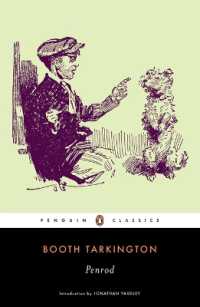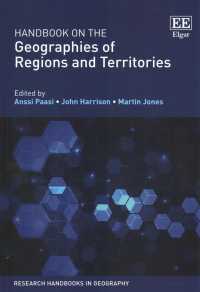- ホーム
- > 洋書
- > ドイツ書
- > Humanities, Arts & Music
- > Linguistics
- > english linguistics
Full Description
A reconciliation movement spread across Australia during the 1990s, bringing significant marches, speeches, and policies across the country. Indigenous and non-Indigenous Australians began imagining race relations in new ways and articulations of place, belonging, and being together began informing literature of a unique new genre. This book explores the political and poetic paradigms of reconciliation represented in Australian writing of this period. The author brings together textual evidence of themes and a vernacular contributing to the emergent genre of reconciliatory literature. The nexus between resistance and reconciliation is explored as a complex process to understanding sovereignty, colonial history, and the future of society. Moreover, this book argues it is creative writing that is most necessary for a deeper understanding of each other and of place, because it is writing that calls one to witness, to feel, and to imagine all at the same time.
Contents
Contents: Reconciliation has a history - A «place» for reconciliation in Australian writing - It's not Black and White: Migrant Australians and reconciliation - Reconciliation as embodiment: Knowing the Other through touch and emotion - Reconciliation as a discourse on belief and one of belief itself: Exploring Alexis Wright's Carpentaria - Not a conclusion: An exploration of what continues to be reconciled.







